Fifty Years of History of the Japan Audiological Society
Introduction
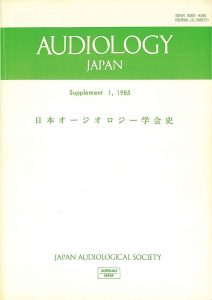
Photo 1. The journal “Audiology Japan Supplement 1”
published in 1985, titled “History of the Japanese Society of Audiology”
We are going to look back at the history of the Japan Audiological Society. “History of Japan Audiological Society” was compiled in 1985 to commemorate the 30th anniversary of the society. It was published as Supplement 1 (1985) of “Audiology Japan,” the bulletin of the Society (Photo 1). Many current members probably do not know about it. It contains valuable material and photographs that are no longer available elsewhere. I want members reading this to know that the following text contains quotations from “History of the Japan Audiological Society.” Therefore, we can trace the trajectory of the Society while looking back at the meetings from the 31st to the 50th years of the society.
This society is one of the most traditional among the associated societies and research groups of the Japanese Society of Otorhinolaryngology. Initially, research on most diseases of the ear was covered by this society, but with time, newer organizations, such as the Japan Vestibular Study Group (currently called “Japan Society of Equilibrium Research”), the Otomicrosurgery Study Group (currently called “Japan Otological Society,” formerly known as “Japanese Society of Clinical Otology”), and the Inner Ear Biochemistry Study Group (currently called “Japan Otological Society,” formerly known as “Japanese Society of Basic Otology”) have become established.
Foundation of the Society
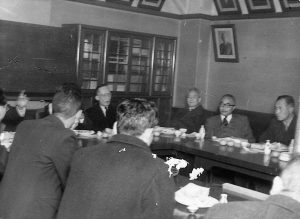
Photo 2. A snapshot of the first meeting of the Study Group on Hearing Loss
The first meeting of Study Group on Hearing Loss was held at the University of Tokyo in 1951.
organizers of this meeting were Shinsaku Horiguchi, Yutaka Onchi, Kenjiro Owada, and Michinari Okamoto, and the facilitators were Kotoji Satta, Toshikazu Nishibata, Toshizo Ohto, Ichiro Kirikae, Shinsaku Horiguchi, and Yutaka Onchi. The meeting was held every November for five years from 1951. The number of participants increased from 40 at the first meeting to 200 at the fifth meeting.
Photo 2 shows the first meeting held in the main building of the Faculty of Medicine at the University of Tokyo. Professor Kaga of the University of Tokyo lent the photo to us, which had recently been found in the house of the late Dr. Kotoji Soda.
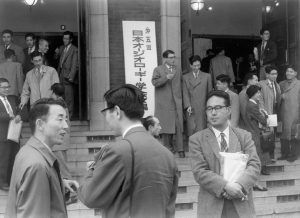
Photo 3. Fifth meeting of the Japan Audiological Society (Nihon-Audiology-Gakkai)
The fifth meeting of the Hearing Loss Research Group was considered as the first official meeting of the Japan Audiological Society. It was held at Keio University in 1956, with about 300 members. The annual membership fee was 200 yen at that time. In 2005, the Japan Audiological Society marked its 50th anniversary, thanks to the active contribution of the members of the society.
As Chart 1 shows, the name of the current Japan Audiological Society has been changed three times in its history.
Table 1: Changes in the name of the society
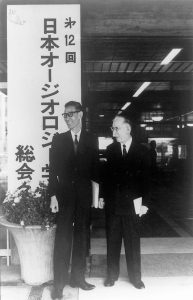
Photo 4. The Japanese Society of Audiology (Nihon-Audiology-Gakkai)
| 1951 | The Study Group on Hearing Loss |
| 1956 | The Japan “Audiologie” Society (Nihon-Audiologie-Gakkai) |
| 1959 | The Japan Audiological Society (Nihon-Audiology-Gakkai) |
| 1988 | The Japan Audiological Society (Nihon-Choukaku-Igakukai) |
Photo 3 shows the fifth meeting of the Japan Audiological Society. Photo 4 shows the heroic figures of Professors Kotoji Satta and Ichiro Kirikae.
The Society values free discussion and general sessions without planning special programs, just as in the days of the Group Study. This approach has been our tradition. In addition to general sessions, successive presidents have arranged other sessions on timely themes to promote discussions. The themes also reveal the changing trends over time.
The Journal of the Japan Audiological Society
The name of the journal, “Audiology Japan,” has not changed since the first issue of the journal was published in 1958. The journal was initially published annually, and then became a quarterly publication in 1960. From 1970 up to the present, the journal has been published six times a year.
Committees
This Society shares many social-medical aspects with the Japanese Society of Otorhinolaryngology. Therefore, over the past 50 years, we have formed and worked in wide-ranging committees, as follows, to tackle trending issues: the Planning Committee, Public Relations Committee, Hearing Loss Control Committee, Welfare and Medical Care Committee, Research Committee, Terminology Committee, JIS/ISO Committee, Acoustical Society of Japan JIS Committee, JIS Revision Committee, Bone Guide 0dB Committee, Insurance Medical Care Committee, Ad-hoc Committee for Sudden Hearing Loss Clinical Examination Guidelines, Examination Standards Committee, International Committee, and Council for Promotion of Qualification System for Medical Speech-Language Pathologists.
Establishment of a standard for hearing measurements

Photo 5. A snapshot of the working group on the Standard of Hearing Measurement
Publication of the “Standard of Hearing Measurement” should be mentioned here. The members of the third Hearing Loss Research Group (Dr. Kotoji Soda was the director) led the comprehensive research on “Standards of Hearing Measurement Methods,” which was authorized by the then Ministry of Education, Culture, Sports, Science and Technology in 1954. Over three years, a total of eight meetings were held, which led to publication of the “Standards of Hearing Measurement Methods” was published as a result.
Thanks to the aforementioned research, the present audiometer and measurement method of standard pure tone audiometry, as also the current form of the audiogram, were established. Furthermore, the basis for the measurement method of word recognition was also developed, and the 57A/B and 67A/B word lists, which are now used in speech recognition tests, were created after repeated revisions.
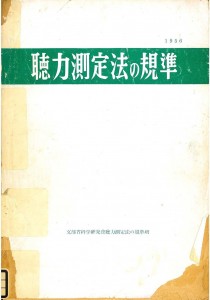
Photo 6. The Standard of Hearing Measurement (1956)
Photo 5 was taken at the meeting for the Working Group for the Standards of Hearing Measurement Method. Photo 6 shows the cover of the “Standards of Hearing Measurement Method.” The photos were donated to the office of the Society by Dr. Takashi Tsuiki, an advisor.
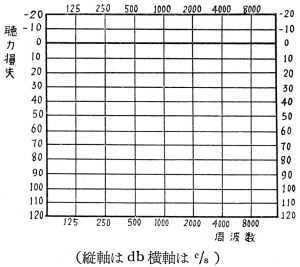
Figure 1. Audiogram on the Standard of Hearing Measurement
Figure 1 shows the audiogram described in the “Standards of Hearing Measurement Method.” The words “hearing loss” which the vertical line denotes, “frequency” which the horizontal line denotes, and numbers are handwritten.
History of the Associated Study Groups
Various associated study groups have been organized over time, as follows: “Study Group for Noise,” “Study Group for Psychoacoustics,” “Study Group for ERA,” “Study Group for Hearing Aid,” “Study Group for Otoacoustic Emissions,” “Study Group for Tinnitus,” Study Group for Ear Fullness,” etc. The “Study Group for Tinnitus” later became the “Study Group for Tinnitus and Hearing Loss.” The oldest “Study Group for ERA” has continued its activities as the “Study Group for ERA/OAE” since 2006. Furthermore, the “Study Group for Inner Ear and Distortion of Sounds” was established in 2004, and the “Study Group for Auditory Anti-aging” was established in 2007.
History of the training course for audiometry measurement skills
The first training course for audiometry technicians (now called the training course for audiometry skills) was held at Keio University from May 10 to 15, 1965. The number of participants was 26. Since then, the workshop has been held in Tokyo annually. In some years, it was held twice a year. Some of the courses have been held in Osaka City, Nagoya City, Fukuoka City, Morioka City, and Niigata City.
Over 4,000 participants have been trained through the workshop, and the 70th course was conducted in 2006. In addition to the General Course, the Intermediate Course and the Medical Practitioner Course are also offered. In 2005, a new course, the Newborn Hearing Test Course, was launched, which indicates the increasing importance of training workshops for audiometry skills.
Founding of the Ear Day
The first Ear Day was celebrated on March 3, 1955, by the Hearing Loss Research Group. The day was called “Hearing Protection Day” in that year, and free consultations for hearing loss were offered on the day by the study group members. The following year, the first “Ear Day” was marked on May 20, 1956, under the sponsorship of the Japanese Society of Otorhinolaryngology and the Japanese Medical Association. Since the second event in 1957, it has been held on March 3 every year.
Hearing Aid Fitting Diagnostic Physician Training Course
The first training course was held at the National Rehabilitation Center for Persons with Disabilities in 1983. Thanks to the effort of those involved in its establishment, the courses were funded by Ministry of Health, Labour and Welfare and supported by the Japanese Society of Otolaryngology and the Japan Audiology Society (former name). The curriculum was developed mainly by Dr. Michinari Okamoto and Dr. Kenjiro Owada.
International Federation of ORL Societies

Photo 7. Program of the IInd Extraordinary Congress
The 21st World Congress of Audiology was held in Morioka City, Iwate Prefecture, from August 31 to September 4, 1992, under the chairmanship of Mr. Takashi Tsuiki, who was honored by the late His Imperial Highness Prince Takamado and Her Imperial Highness Princess Takamado.
Moreover, The IInd Extraordinary Congress of the International Society of Audiology was held in Kyoto, Japan, on October 20-21 in 1965, around the same time that the International Federation of ORL Societies (IFOS) in Tokyo, Japan.
The congress held in 1965 in Kyoto was organized by Mr. Mitsuharu Goto as the President, Mr. Ichiro Kirikae and Mr. Fumio Nakamura as vice-presidents, Mr. Masanori Morimoto, as Executive Director, and Mr. Fumihiko Ohta as the Secretary General. The number of registered members from 33 countries was 221, who were accompanied by 131 wives.

Photo 8. A snapshot of the 21st World Congress of Audiology
Around the time that this congress was held marked a turning point in the history of Japan: in 1964, the Tokyo Olympics were held, and the Tokaido Shinkansen Line, the first bullet train in the world, was inaugurated the previous year.
Photo 7 is the cover of the program booklet, which was made of traditional Japanese paper and designed in a traditional Japanese way by Mr. Iwao Honjo, a member of the Japan Audiological Society. Photo 8 shows the opening ceremony.
Launch of homepage
The website of the Society was launched in 2002, and all those involved in the management of the website are continuing to make efforts to improve and upgrade the contents. We sincerely hope that many people, including our members, are able to access our website and find the contents meaningful(https://audiology-japan.jp/)
Conclusion
The above is a review of 50 years of the Society and an outline of its history. Covering every event in the journey of the Society was beyond the scope of this short paper. I hope that you will read the 50th anniversary article to obtain more information (Audiology Japan 49-1, 50 years of the Japan Audiological Society, 2006) The Society marked its 50th anniversary and is approaching a turning point. I am sure that the current members will take over the great work of their predecessors and keep upgrading the Society.



